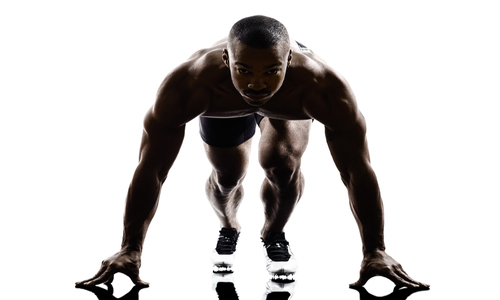Motor Structures: motor activity is controlled by intricate interactions of three major regions of the brain: the “cerebral cortex” (involved in planning and execution of motor activities), the “basal ganglia” (initiation of movement and modulation of the “motor cortex”), and the “cerebellum” (integration of “visual,” “auditory,” “vestibular,” and “somatosensory information” to plan, modify, and coordinate movement). (Patestas, 171)
Charles Sherrington and his colleagues demonstrated that the cortex of the primate frontal lobe contained a complete ‘motor map’ of the animal’s body. Sherrington found the “primary motor cortex” of great apes in the “precentral gyrus,” a cortical area located in front of the “central sulcus,” which separates the “frontal” and “parietal lobes.” (Nicolelis, 51) Sherrington discovered that motor neurons receive and respond selectively to one of two very different signals: “excitatory” signals and “inhibitory” signals. Excitatory signals trigger the action of the “motor neurons” that initiate extension of a limb, for example, while inhibitory signals tell the motor neurons that control ‘flexion,’ the opposing movement, to relax. (Kandel4, 160) The motor cortex contains an upside-down map of the whole body like the "homunculus," but it is concerned with sending signals to the "muscles" rather than receiving signals from the "skin." (Ramachandran, 44)
Frontal Eye Field: located in the “premotor cortex.” (Blumenfeld, 906) Region of the “frontal lobes” that provides the ability to scan a detail-rich visual scene extracting important information from wherever it may appear in the environment (Goldberg, 32) Occupies "Brodmann Area" 8. Brodmann Area 5 functions in the coordination of eye movements, particularly movements mediating voluntary visual tracking of a moving object. Brodmann Area 7 is involved with movement that requires visual guidance. (Patestas, 174)
Primary Motor Cortex: lies in the “precentral gyrus” in the frontal lobe. Controls movement of the opposite side of the body. (Blumenfeld, 28) A vertical strip of cortical tissue in the frontal lobes that lies just in front of the furrow that separates the frontal lobe from the parietal lobe. When you decide to move your hand, the chain of events leading to its movements originates in the motor cortex. (Ramachandran, 44) A ‘higher’ brain region that issues voluntary movement commands. (RamachandranTTB, 18) Specialized in producing voluntary skilled movements, like playing a piano or combing your hair. (Hawkins, 113) Concerned mainly with simple movements like wiggling your finger or smacking your lips. (Ramachandran, 44) Also referred to as the ‘motor cortex,’ ‘primary motor area,’ 'Brodmann Area 4,' and ‘M1.’
Right Motor Cortex: helps orchestrate complex movements on the left side of the body. (Ramachandran, 14)
Secondary Motor Cortex: principal function is the programing of complex motor activity, which is then relayed to the primary motor cortex where the execution of motor activity is initiated. (Patestas, 173) Appears to be in charge of more complex skills such as waving good-bye and grabbing a banister. This area acts like a kind of master of ceremonies, passing specific instructions about the proper sequence of required movements to the motor cortex. Every time a command is sent from the "supplementary motor cortex" to the motor cortex, it goes to the muscles and they move. At the same time, identical copies of the command signal are sent to two other major processing areas - the "cerebellum" and the “parietal lobes” - informing them of the intended action. These two structures help you compare your intention to your actual performance. This makes possible the modifying of the motor command if necessary. (Ramachandran, 44) Also referred to as ‘M2.’
Posterior Parietal Motor Area: corresponds to Brodmann Area 5 and 7. Involved in the ability to perceive a subtle distinction by the sense of touch and the recognition of the three-dimensional shape of an object by the sense of touch. (Patestas, 174)
Premotor Cortex (PMC): resides in most of Brodmann Area 6. (Patestas, 174) Concerned with planning, selecting, and executing actions. (Iacoboni, 9) Involved in transforming visual and semantic information about an object directly into a motor command that shapes your hand appropriately. For example, when reaching for a coffee cup, your hand pivots to vertical and your fingers hook to prepare to pick it up. (Blakeslee, 107) The part of the conscious brain that creates the urge to move. Connects to the "putamen" via a complex loop of nerves. Also connects to the adjoining cortex to which it sends a ‘move it’ message. (Carter, 59) Functions in guiding or turning the body and the upper limbs toward a desired (or appropriate) direction. Once an intended movement has begun and is in progress, activity in the PMC decreases, reflecting its key function in the planning phase of motor activity. (Patestas, 175)
Area F5: (part of monkey premotor cortex that) contains millions of neurons that specialize in “coding” for one specific motor behavior: actions of the hand. Includes ‘grasping,’ ‘holding,’ ‘tearing,’ and most fundamental of all, bringing objects, (for example food), to the mouth. Humans perform hundreds, if not thousands, of grasping actions every day. (Iacoboni, 9) Note, some neurons in F5 fire for both hand actions and for mouth actions. (Iacoboni, 15)
Supplementary Motor Area (SMA): lies in Brodmann Area 6. Associated with muscle contractions of the trunk and muscles controlling movement of the arm and thigh. Functions in the programing phase of the patterns and sequences of elaborate movements and coordination of movements. (Patestas, 174) Also referred to as 'supplementary motor cortex.'
